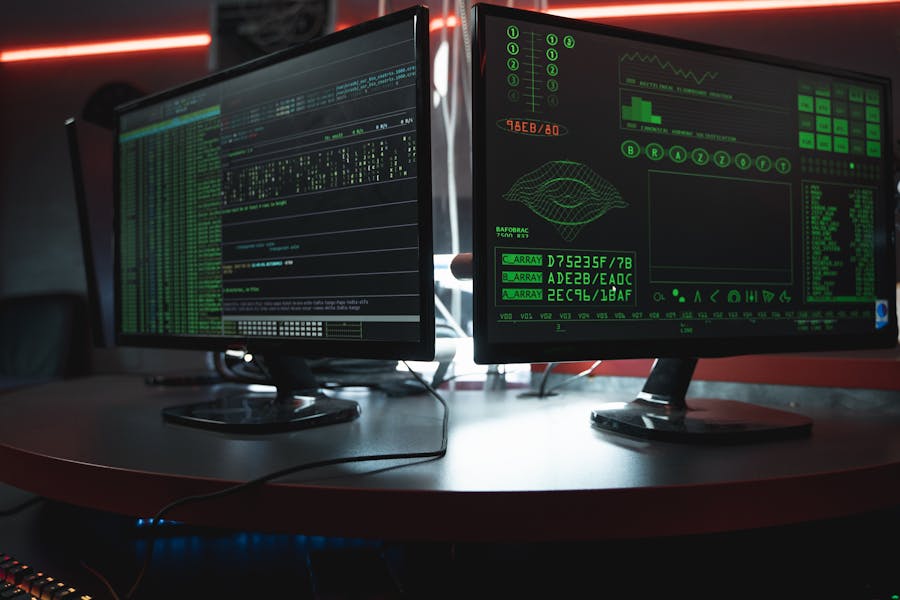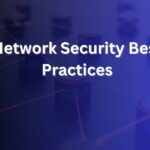Cybersecurity is the backbone of digital defense in today’s hyper-connected world. As cyber threats become more sophisticated, professionals and organizations are turning to an arsenal of software solutions to detect, prevent, and respond to security breaches. But exactly what software do cybersecurity professionals use?
Understanding the tools that power modern cybersecurity operations is crucial for IT teams, business owners, and aspiring cyber professionals alike. From antivirus software and firewalls to intrusion detection systems (IDS) and SIEM platforms, the right cybersecurity tools can mean the difference between a secure system and a catastrophic data breach.
This guide will explore the most important software used in the cybersecurity industry. We will outline how each type functions, when it’s used, and why it matters—all while ensuring the keyword “what software do cyber security use” is optimized across every section.
What Software Do Cyber Security Use? Cybersecurity professionals use a wide range of software, including antivirus programs, firewalls, encryption tools, intrusion detection systems (IDS), SIEM software, VPNs, and endpoint protection platforms. Each serves a specific role in identifying, preventing, and responding to cyber threats.
Top Cybersecurity Tools Used to Prevent Data Breaches
Cybersecurity begins with prevention. Professionals use various proactive software solutions to stop threats before they reach critical systems. Antivirus and anti-malware software are foundational, scanning files and programs for known malicious signatures. These programs are often updated multiple times a day to stay current with emerging threats.
Firewalls act as gatekeepers, monitoring and controlling incoming and outgoing network traffic. Whether hardware- or software-based, firewalls define the rules for safe communication and serve as the first line of defense in any cybersecurity strategy.
Endpoint Detection and Response (EDR) software is another key player in threat prevention. EDR tools monitor endpoints—like laptops, servers, and mobile devices—for suspicious activity and provide automated responses to threats. This is especially critical in a world where remote work is the norm.
Vulnerability scanners such as Nessus or OpenVAS help organizations identify weaknesses in their systems before hackers can exploit them. These tools generate reports that IT teams use to patch and secure their environments.
Security software like web application firewalls (WAFs) protects websites from common attacks such as SQL injection and cross-site scripting (XSS). By filtering malicious traffic at the application level, WAFs help maintain the integrity of online platforms.
Lastly, data loss prevention (DLP) tools monitor the flow of sensitive data across networks. They prevent employees or attackers from moving critical information outside the organization’s secure environment.
How Do Cybersecurity Experts Monitor Threats?
Monitoring cyber threats requires advanced tools that provide real-time visibility and actionable insights. Here’s how experts stay ahead of attacks.
SIEM: Centralized Threat Detection
Security Information and Event Management (SIEM) software is a cornerstone of modern threat monitoring. It gathers logs and security data from multiple sources—servers, firewalls, endpoints, and applications—into a unified system. By analyzing this information in real time, SIEM tools can detect suspicious patterns and generate alerts when anomalies or known threat signatures appear. This allows security teams to react quickly to incidents before they escalate.
Intrusion Detection Systems (IDS)
Intrusion Detection Systems, such as Snort and Suricata, play a vital role in identifying unauthorized or malicious activities within a network. These tools inspect traffic flows and compare them against a database of known attack signatures. When a match is found, the system notifies administrators, enabling them to take corrective action. IDS tools are crucial for detecting both external attacks and internal misconfigurations.
SOC Platforms for Real-Time Collaboration
Security Operations Center (SOC) platforms consolidate cybersecurity activities into a central command hub. These tools allow teams to monitor threats, share intelligence, and investigate incidents collaboratively. They often integrate with SIEM systems to provide comprehensive oversight.
Behavior Analytics for Insider Threats
User and Entity Behavior Analytics (UEBA) tools use machine learning to detect behavioral anomalies. By monitoring user actions over time, they can identify deviations that may signal insider threats or account takeovers, often before any damage is done.
Top Cybersecurity Software Tools Used in 2025
Cybersecurity professionals in 2025 rely on a variety of advanced software tools to secure digital assets, detect threats, and respond to vulnerabilities. These tools span multiple domains—from network analysis to endpoint protection and penetration testing. Below is a curated selection of the most trusted solutions used across industries today:
- Wireshark – A powerful network protocol analyzer that allows security experts to capture and inspect packets in real time, making it ideal for diagnosing network issues and analyzing traffic.
- Splunk – A leading SIEM platform that collects and analyzes machine-generated data. It’s widely used for log management, threat detection, and forensic investigation.
- Metasploit – A comprehensive penetration testing framework that helps identify system vulnerabilities by simulating attacks.
- Kali Linux – A Linux-based OS packed with pre-installed security tools designed for ethical hacking, forensic analysis, and vulnerability assessment.
- CrowdStrike Falcon – A cloud-native Endpoint Detection and Response (EDR) platform that delivers real-time protection against malware and advanced threats.
- Bitdefender GravityZone – Offers robust endpoint security features including antivirus, firewall, and risk management controls.
- Burp Suite – A must-have for web application security testing, providing tools for scanning and manual penetration testing.
- IBM QRadar – An enterprise-grade SIEM that supports intelligent threat detection and incident response.
- Nmap – A lightweight yet powerful network discovery tool used to scan networks and identify open ports or services.
- Tenable Nessus – A widely trusted vulnerability scanner that helps organizations detect weaknesses and stay compliant.
Why Cyber Security Needs a Variety of Software Solutions
No single tool can defend against every threat. The modern cyber landscape is filled with diverse attack vectors: phishing, ransomware, insider threats, DDoS attacks, and zero-day exploits. Each type of attack requires a tailored response.
That’s why cybersecurity professionals use a combination of software tools. Antivirus stops known malware, while firewalls block unauthorized access. SIEM systems offer broad visibility, but EDR tools provide deep endpoint analysis. Vulnerability scanners identify weak spots, while encryption tools like VeraCrypt protect data at rest.
The synergy of multiple tools creates a defense-in-depth strategy, ensuring that if one layer fails, others continue to protect the system. Additionally, automation is increasingly integrated into software, with AI-driven tools capable of analyzing millions of events and responding instantly to threats.
Having a diverse toolset also ensures compliance with security frameworks like NIST, ISO 27001, and GDPR. Organizations must demonstrate that they use appropriate safeguards to protect user data.
When Should You Use Cybersecurity Tools and Which Ones Matter Most?
Knowing when to use cybersecurity tools is just as important as knowing which ones to use. Timely deployment helps prevent breaches before they start.
When to Deploy Cybersecurity Tools
Cybersecurity tools should be implemented proactively, not reactively. Waiting for a threat to materialize before deploying defenses can leave critical systems vulnerable. Continuous monitoring, routine updates, and layered protection strategies are essential components of a strong cyber defense. The timing of deployment is just as important as the type of tool used, as threats can evolve rapidly and strike without warning.
Real-Time Protection for Ongoing Threats
To guard against active threats, tools like CrowdStrike, SentinelOne, and Bitdefender are widely used for their real-time protection capabilities. These solutions offer automatic detection and response mechanisms, stopping malware and intrusions before they can spread across the network.
Compliance and Regulatory Requirements
For organizations that must comply with data security laws and regulations, platforms like Splunk and IBM QRadar are vital. These SIEM systems provide centralized logging and reporting, helping businesses demonstrate due diligence. Data Loss Prevention (DLP) tools also play a critical role in ensuring sensitive information doesn’t leak beyond the network perimeter.
Small Business Considerations
Smaller organizations may not need enterprise-grade solutions but still require protection. Antivirus software, cloud-based firewalls, and secure VPNs are more affordable and suitable for modest infrastructures.
Essential Tools for Incident Response
When breaches occur, forensic software such as FTK and EnCase becomes crucial. These tools help investigators uncover how an attack happened, while log analysis and incident management platforms support swift and informed response actions.
Conclusion
What software cybersecurity use is vital in today’s digital age. The right mix of tools—from firewalls to advanced SIEM systems—can empower individuals and organizations to stay secure against evolving threats.
Every cybersecurity software plays a specific role in safeguarding data, infrastructure, and users. A layered, tool-based approach ensures that systems remain resilient against attacks, whether internal or external.
FAQ’s
What is the most commonly used cybersecurity software?
Antivirus tools like Bitdefender and endpoint protection platforms are widely used, along with SIEM systems like Splunk for real-time threat monitoring and compliance.
Can one software tool provide full cybersecurity?
No. A complete cybersecurity strategy requires multiple tools working together to cover various threat vectors, from malware to insider threats and network breaches.
What software do cybersecurity professionals use in government agencies?
Government networks typically use enterprise-grade tools like IBM QRadar, FireEye, and Tenable for SIEM, threat detection, and vulnerability management.
Is free cybersecurity software reliable?
Free tools can offer a decent level of protection for personal use, but they often lack the advanced threat detection, automation, and support needed for organizations.
How often should cybersecurity software be updated?
Cybersecurity software should be updated as frequently as possible—many providers push updates daily or hourly to stay ahead of evolving threats.







